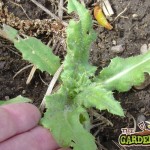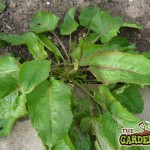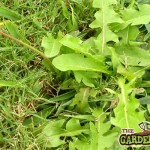Shopping for weed killers can be a confusing exercise, with the range and vartiety of herbicides available on the market choosing the one for you is never easy. To try and simplify things I will give you a simple breakdown of the different types and what use each is best suited to.
- Types of Weed Killer
- Types of Weed Killer
- Types of Weed Killer
The types of weed killer include: contact, systemic, residual, selective and non selective. Each different type has a specific use and you can do serious harm if you fail to choose carefully. As an early point to note; the most common herbicide ‘Roundup’ is a contact and systemic, non selective weed killer.
Contact weed killer: These are herbicides which kill plants that they come into contact with. Contact weed killers are taken up by the leaf by entering the stomata of the plant’s leaf. With this in mind, the herbicide can only enter the leaf when the stomata are open. Stomata are only open when the plant is actively growing and during the day while photosynthesis is taking place. For a contact weed killer to work it must be applied to the target plants during the growing season, applied to green, living foliage, and should be applied early in the day; giving it all day to work its way into the stomata.
Contact herbicides are very suitable as they have no effect on the garden soil. Glyphosate is a common contact herbicide and when it comes into contact with the soil it becomes locked inside the soil particles making it un available to plant roots, hence making it redundant in the soil. Contact herbicides take about 2 weeks to take effect and are great for controlling annual weeds. To control perennial weeds 2 or 3 applications are required.
Systemic weed killer: Most herbicides are systemic; this means that, on entry into the plant, they work their way through the plants transport system to all areas of the plant. This allows the herbicide kill all parts of the plant. For example; a contact systemic weed killer enters the plant’s foliage and works its way through the plant down to the plant’s roots which is essential to kill the plant completely.
Residual weed killer: These are also called soil acting weed killers. I would advise against every using these as they poison the soil rendering it inactive and useless for growing any plants, weeds or flowers. Residual herbicides include brands such as ‘Path clear’ and are taken up by the plant’s roots. Most residual herbicides sit in the soil for months preventing any form of growth from taking place. However lesser plants such as algae and lichens are unaffected by these herbicides are often a green mould begins to form on the soil surface.
Residual herbicides are suited to using on hard standing areas such as paths, drives, patios and tarmacadam. They are not suited to areas where you intend on growing plants or vegetables within the next 2 years or so.
Non selective weed killers: Non selective weed killers are those which kill everything that they come into contact with. Roundup is an example of a non selective herbicide. These will kill or severely damage any plant that they touch. It is therefore very important to take great care when applying herbicides. Never spray in windy conditions, never walk over areas that have been sprayed, cover any plants close to spray areas and handle chemicals and knapsack sprayers with care.
Selective weed killers: These are herbicides which only kill a particular plant. An example would be a lawn weed and feed product. Lawn weed and feeds work as the herbicide only target broad leaved plants (lawn weeds such as buttercup, daisy, dandelion) while having no effect on narrow leaved plants (grasses). Narrow leaved and broad leaved plants are two early evolutionary divisions within the plant kingdom and have very different vascular or transport systems.
Another example of a selective weed killer is those used in forestry to kill grasses while not effecting young tree saplings. Brands include Oust by Du pont, and Dicamba among others.


